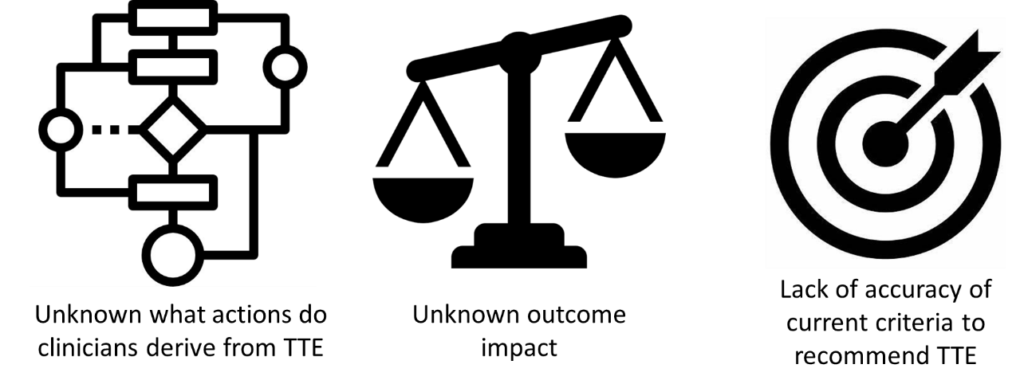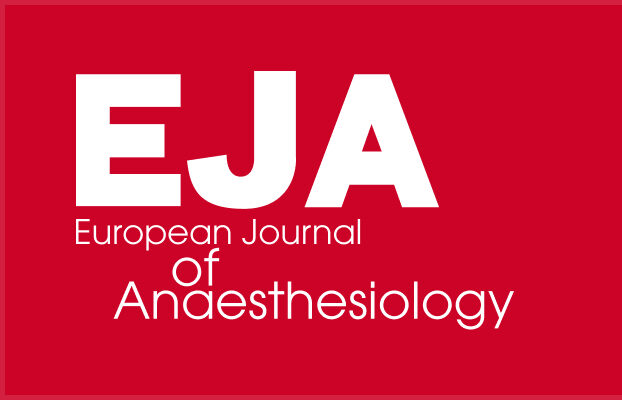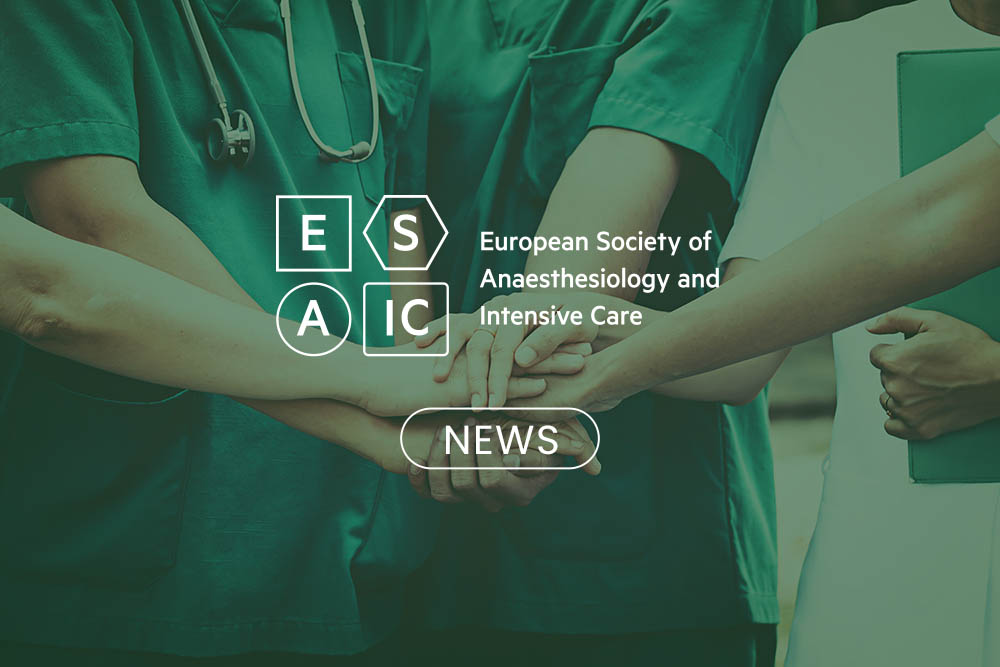Newsletter 2024
ESAIC CTN Study - EuPreCHO
European study on perioperative management and outcome following Preoperative Transthoracic Echocardiography in noncardiac surgery patients
The ESAIC vision, “Together for improved health outcomes, patient safety, and greater environmental sustainability across anaesthesiology and intensive care”, is put into action in multiple research activities. Excellence and cooperation or more appropriately excellence through cooperation are the pillars on which the ESAIC Clinical Trail Network (CTN) relays.
The CTN was established in 2010 with the aim of fostering large research cooperations in the field of Anaesthesiology, Intensive Care, Peri-Operative Medicine, Emergency Medicine, and Pain Medicine. The ESAIC research team supports study and data management and, even more crucial for the conduction of large-scale projects, it provides access to an extended network of researchers and centres across Europe. Over the last decade, this tremendous support by the ESAIC allowed the successful conduction of several large international trials (https://www.esaic.org/research/clinical-trial-network/published-trials/) that contributed to improved perioperative care.
In 2023 the project “EuPreCHO: European study on perioperative management and outcome following Preoperative Transthoracic Echocardiography in noncardiac surgery patients” was awarded with the ESAIC CTN Grant.
Why is EuPreCHO necessary?
In August 2022, the European Society of Cardiology (ESC) published updated guidelines [1] (previous version 2014) including recommendations on preoperative transthoracic echocardiography (TTE). Early investigations suggest a substantial increase in patients qualifying for preoperative TTE under these guidelines. In many countries, perioperative services are not well equipped to handle a surge in preoperative TTEs without risking surgical delays. The widespread adoption of an expanded use of preoperative TTE could significantly impact resource utilisation also due to downstream investigations.
This pressure exerted on healthcare structures is of particular concern because the impact of preoperative TTE on outcomes is controversial, and the evidence is mostly derived from administrative databases [2-8]. There is also a knowledge gap in terms of what changes in perioperative management are derived from TTE information in current daily practice and what their impact on outcomes may be. Further, a secondary analysis in a large international cohort [9] suggests that the criteria endorsed by the ESC guidelines to define the class of recommendation of TTE may not be efficient.

Figure 1. Knowledge gaps regarding the use of TTE before noncardiac surgery.
EuPreCHO aims to answer the following 3 research questions with regard to patients undergoing intermediate and high-risk noncardiac surgery procedures:
- does the perioperative management of patients evaluated with vs those not evaluated with preoperative TTE differ in current clinical practice?
- does the outcome of patients evaluated with vs those not evaluated with preoperative TTE differ in current clinical practice?
- what factors (model) enhance the prediction of major pathologies in preoperative TTE?
How is the study designed?
EuPreCHO is designed as a prospective cohort with a 2:1 sampling ratio, i.e., it aims at recruiting nearly 5400 patients with and 2700 patients without preoperative TTE. Data on perioperative management (e.g., cardiological work-up, intraoperative haemodynamic monitoring, or ICU admissions) will be collected. The focus will be on patient-centred outcomes at 30 days, i.e., disability-free survival and days-alive-and-out-of-hospital. The data collected in the TTE patients will allow to generate models to improve selection of patients for preoperative TTE, i.e., to maximise the number of detected major pathologies per conducted test.
Why would your hospital participate?
Conduction of EuPreCHO and answering its questions will require the joint efforts of anesthesiologists from all over Europe cooperating once more within the framework of the ESAIC Clinical Trial Network. Any hospital in Europe or with comparable health care is welcome to join this venture as a study centre and contribute to the generation of clinical practice-changing evidence within a strong and successful research and cooperation network. As in previous CTN studies, the EuPreCHO cohort also provides a unique opportunity to nest local or national cohorts to maximise the knowledge gains from this massive effort.
We currently have 35 centres registered in 18 countries. Join us.
Together for improved health outcomes.
How to obtain more information?
Detailed information is available in the study website
at https://esaic.org/study/euprecho/
Study centre registration occurs online via the dedicated “Call for Centres form” https://esaic.org/research/clinical-trial-network/call-for-centres/
For additional information on the opportunity of nested cohorts within EuPreCHO, please do not hesitate to contact us at giovanna.luratibuse@med.uni-duesseldorf.de. Of note, cohorts nested in EuPreCHO require a separate ethical approval and dedicated informed consent form since ESAIC is not a sponsor of the nested cohorts.
Authors
- Giovanna Lurati Buse
References
- Halvorsen, S., et al., 2022 ESC Guidelines on cardiovascular assessment and management of patients undergoing non-cardiac surgery. Eur Heart J, 2022. 43(39): p. 3826-3924.
- AbuSharar, S.P., L. Bess, and E. Hennrikus, Pre-operative echocardiograms in acute fragility hip fractures: How effective are the guidelines? Medicine (Baltimore), 2021. 100(12): p. e25151.
- Canty, D.J., et al., One-year results of the pilot multicentre randomised trial of preoperative focused cardiac ultrasound in hip fracture surgery. Anaesth Intensive Care, 2019. 47(2): p. 207-208.
- Chang, H.Y., W.T. Chang, and Y.W. Liu, Application of transthoracic echocardiography in patients receiving intermediate- or high-risk noncardiac surgery. PLoS One, 2019. 14(4): p. e0215854.
- Levitan, E.B., et al., Pre-operative echocardiography among patients with coronary artery disease in the United States Veterans Affairs healthcare system: A retrospective cohort study. BMC Cardiovasc Disord, 2016. 16(1): p. 173.
- Pallesen, J., et al., The effects of preoperative focused cardiac ultrasound in high-risk patients: A randomised controlled trial (PREOPFOCUS). Acta Anaesthesiol Scand, 2022. 66(10): p. 1174-1184.
- Tank, A., et al., Evaluation of Appropriate Use of Preoperative Echocardiography before Major Abdominal Surgery: A Retrospective Cohort Study. Anesthesiology, 2021. 135(5): p. 854-863.
- Wijeysundera, D.N., et al., Association of echocardiography before major elective non-cardiac surgery with postoperative survival and length of hospital stay: population based cohort study. BMJ, 2011. 342: p. d3695.
- Stroda, A., et al., Pathological findings associated with the updated European Society of Cardiology 2022 guidelines for preoperative cardiac testing: an observational cohort modelling study. Br J Anaesth, 2024. 132(4): p. 675-684.








